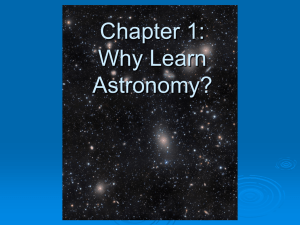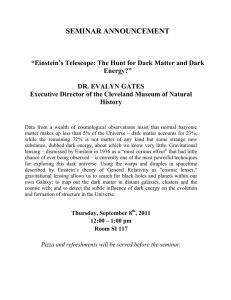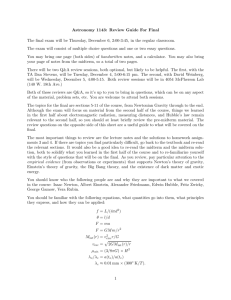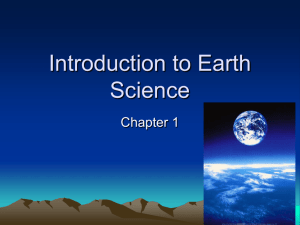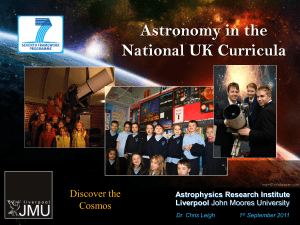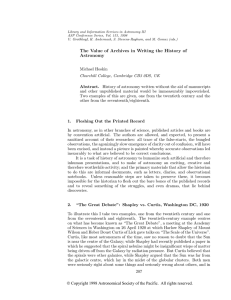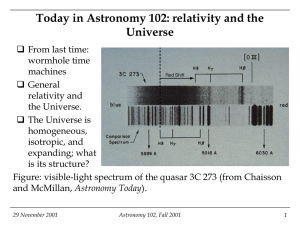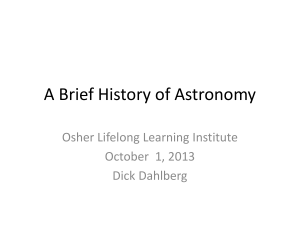Chapter 1
advertisement
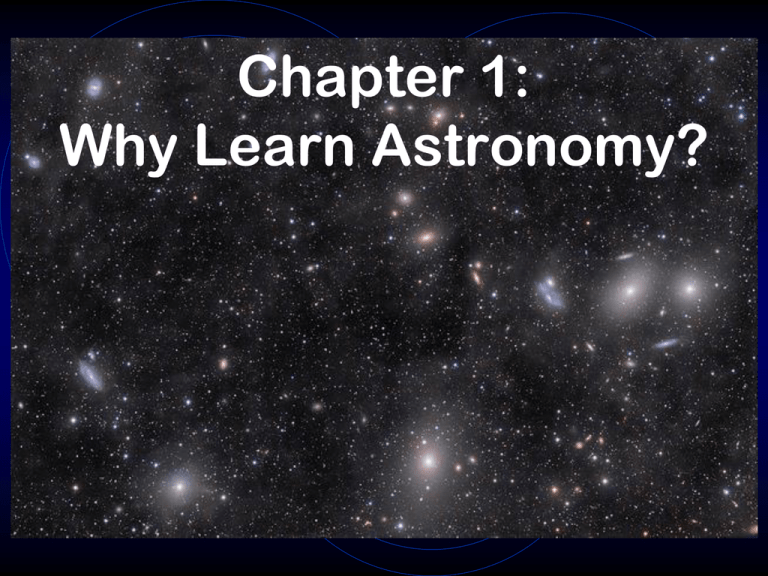
Chapter 1: Why Learn Astronomy? Astronomers study the “patterns among the stars” The origins of Astronomy lie in keeping track of the changes in the patterns Compared to the universe, the Earth is less than a grain of sand on a beach Watch YouTube Size Comparison video and Zoom Out To CMB WMAP video Our Cosmic Address We believe that superclusters are the largest structures to have formed thus far in the universe. Will something larger form in the far future? Probably not but we can’t say for sure. Light travels at a finite speed: about 300,000 kilometers/second Watch One Small Step HD video Because of the finite speed of light, we can see back in time WMAP image of the Cosmic Background Radiation. Light from the edge of the visible universe. Play with Look Back Simulator in ClassAction Introductory Concepts module Astronomers use the Scientific Method to gain an understanding of the Universe In order to make sense of what we see we need a Cosmological Principal Mathematics is the language of Astronomy and Physics Pythagoras 569 – 475BC “The underlying Structure of the Universe is Mathematical” Isaac Newton 1642 – 1727 Newton invented calculus to explain his mechanical universe. The orbits of the planets were like the hands on a giant clock Albert Einstein 1879 – 1955 According to Einstein, the Universe is a much stranger place than Newton thought. Newton could never have imagined black holes but Einstein’s theories predict them. Dealing with numbers large and small Scientific Notation 4,500,000,000,000,000 = 4.5x1015 0.000000000000000028 = 2.8x10-17 Common Prefixes centi = 0.01 = 10-2 (c) milli = 0.001 = 10-3 (m) nano = 0.000000001 = 10-9 (n) kilo = 1,000 = 103 (k) mega = 1,000,000 = 106 (M) giga = 1,000,000,000 = 109 (G) Range of numbers we deal with in astronomy Distances Around the Earth…meters (m) or kilometer (km) 1 m ≈ 39.37 inches 1 km = 1000 m = 0.621 miles Around the Solar System…AU 1 AU = Average Earth – Sun distance 1 AU = 1.496x1011 m = 149.6 million km Beyond the Solar System Lightyear (ly) 1 ly = distance light travels in 1 year 1 ly = 9.46x1015 m = 9.46 trillion km Parsec (pc): distance at which an object shows a parallax of 1 arcsecond: 1pc = 3.26 ly = 30.84 trillion km Other Units Mass…kilograms (kg) 1 kg = 1000 grams 1 kg = 2.205 lbs* *(a pound is not really a mass, it is a force. In the US, we tend to use it like a mass, though) Time…Years, Days, Hours, Minutes and Seconds Temperature…°C °C = (°F - 32°) x 5/9 also use Kelvin scale °K = °C + 273°
